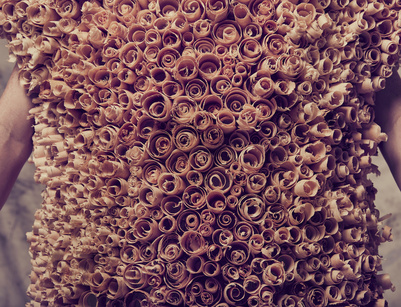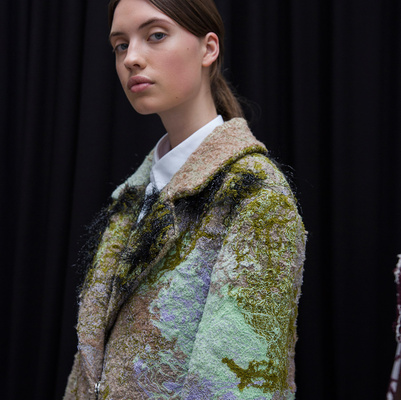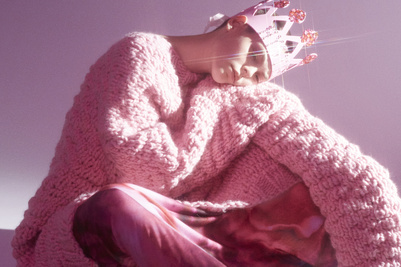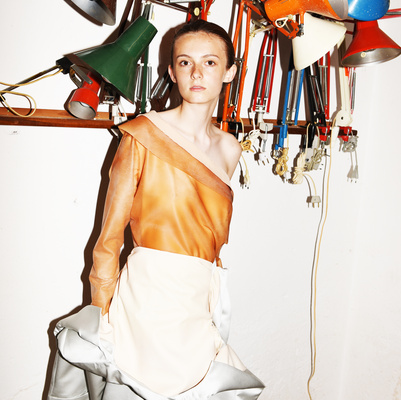It's a wrap
This graduation project is about the concept of 'wrapping' and the idea of aesthetic sustainability. It is an attempt to work with magic through up-cycling of denim, stressing the beauty in the bizarre, applying everyday materials as well as surrealist methods of repositioning objects or materials from familiar to unusual contexts - here: that of the body. The result is a collection with a mix between ready-to-wear and experimental garments.
Wrapping is the material covering of an (living) object often in a temporary way. Usually, what has been wrapped, can be unwrapped again. During the last couple of years I have been photographing objects in the streets that have been wrapped in many ways, often quite randomly. The objects range from motorcycles to traffic lights over trees and street signs. Together they all represent a textile phenomenon I have called 'wrapped objects'.
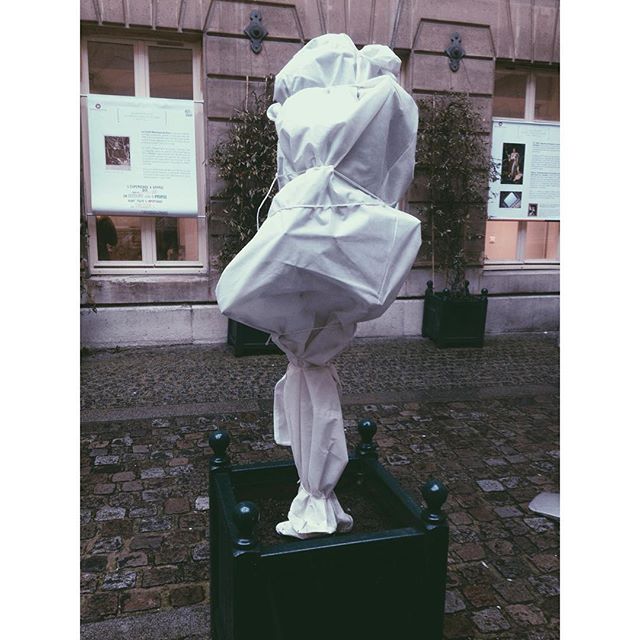
As phenomenon they inspired me to work with everyday and industrial materials such as plastic, tape, table cloth, zip ties and eyelets in a context of clothing and the body. Moreover, these 'wrapped objects' have inspired me to look at clothing history as a whole. Here wrapping as a concept can lead to general reflections on how we dress the body: What is visible ? What is hidden ? How do we perceive the body underneath ? What do the covering symbolize ?
This has driven me into an investigation of erogenous zones, magic and fetich - not in a sexual manner, but as a design tool to address the body and creating shape and details around it.

Overall, I focus on sustainability in both a material and an aesthetic manner. Drawing on the work by theorist Kristine Harper and her book 'Æstetisk bæredygtighed' (Aesthetic Sustainability, 2015) I am applying her design methods in my work motivated to create an aesthetic that is not just the standard assumption of sustainable aesthetics: clean, minimalistic and classic. Most of my materials might not be environmentally sustainable; but they might be aesthetically. Through a complex and unexpected aesthetic I seek to intrigue the perceiver or wearer again and again through my designs. In this way these designs might linger with her for a long(er) time, making her take care of them and connect with them in an intimate, lasting way. Therefore, on an aesthetic level I invite the recipient to indulge in the products and spend time with them - making my magic work on her.
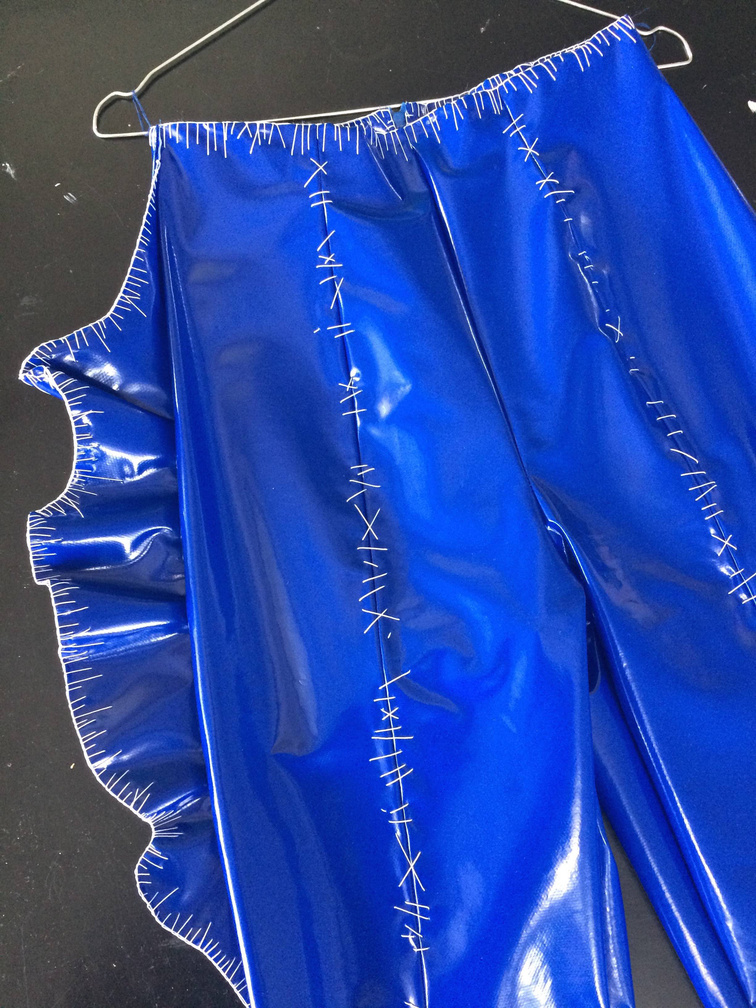
On a material level I also focus on time. Through elaborate detailing with the use of embroidery and material awareness I stress how important it is to show the time spent on production of garments as well as their product life span and potential of prolonging this. With a scholarship from Marie Jacobine Snedkers Mindefond I am raising awareness around the craft and use of embroidery - both as a means of decoration and as repair. In my project the hand is present through embroidery representing 'slow design' through all the time spent on the garments. Throughout the collection, this is highlighted in the garments through contrast color, e.g. white thread on blue or black material. On an industrial and societal scale it is an invitation to slow down - hence commenting on our fast production and consumption causing an immense, threatening impact on our global environment. Fashion design is a very time consuming field which needs to be acknowledged more by both the public as well as designers, producers and consumers.
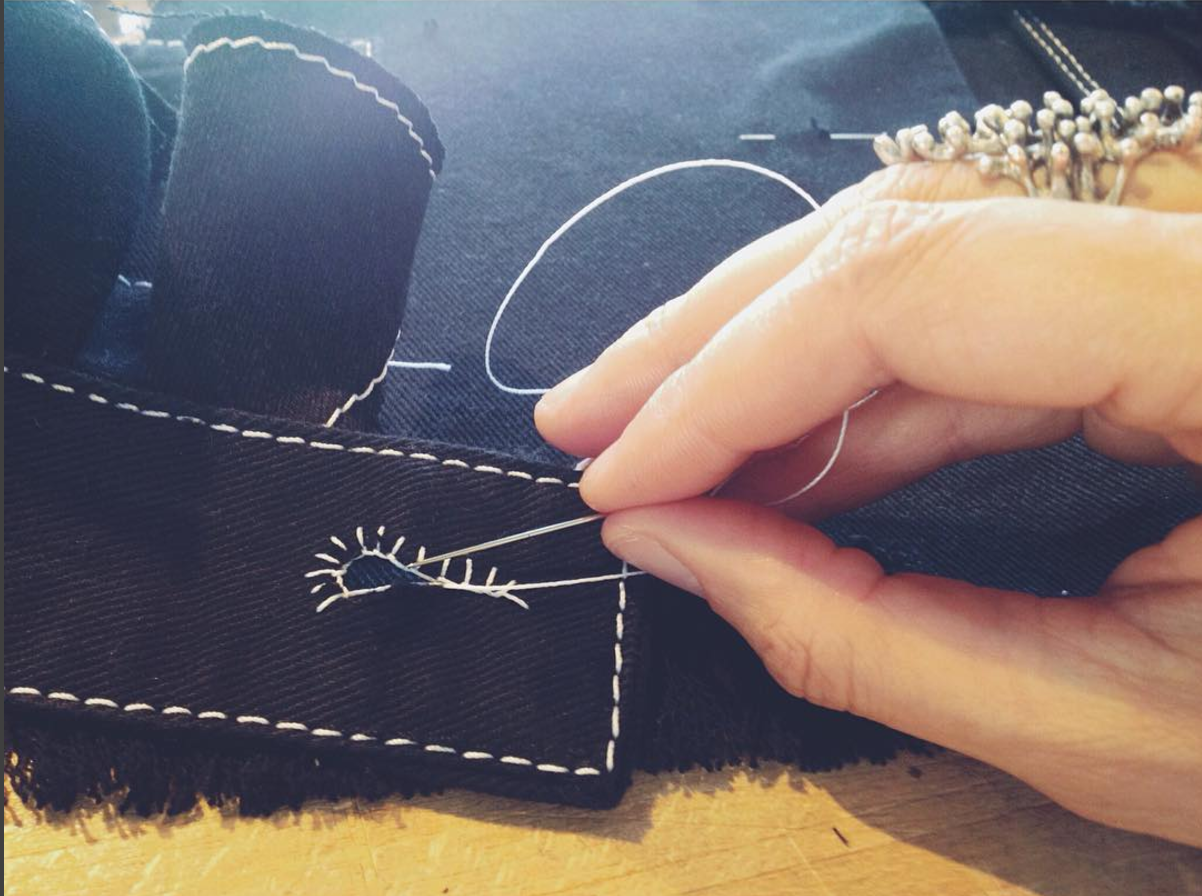
Additionally through a sponsorship from the organisation and second hand chain Kirkens Genbrug I am up-cycling garments and materials such as black denim to a new clothing context. In this process I am adding aesthetic value and giving the-garments-in-new-shapes a new, but slow spin in the wheel of consumption. In this way, I point out the vast potential of already existing garments to be included in new design contexts in a local context and not just to be exported to a foreign market struggling to create their own rising clothing industry.
To summarize, I am working with the UN goal 12 with an attempt to stress for a practice of slow design, aesthetic sustainability and a more contemplative interaction with fashion design.


